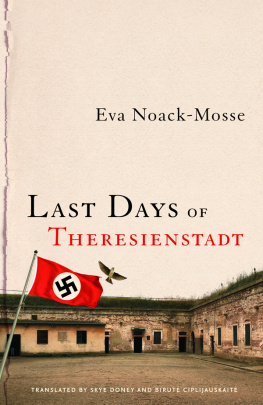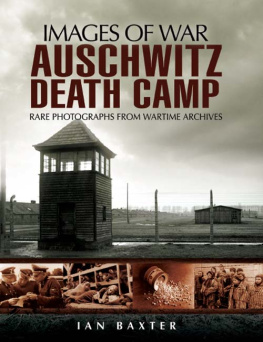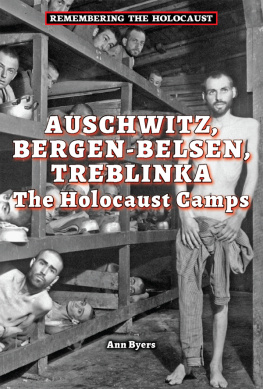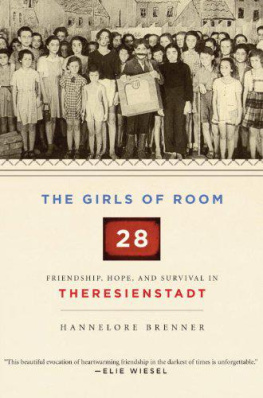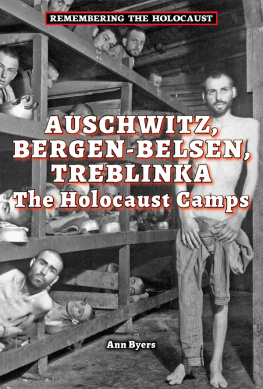
Bound for Theresienstadt
Love, Loss and Resistance in a Nazi Concentration Camp
VERA SCHIFF
with JEFF MCLAUGHLIN
Foreword by Randy Schoenberg

McFarland & Company, Inc., Publishers
Jefferson, North Carolina
Theresienstadt timeline and two maps used with permission
from the U.S. Holocaust Memorial Museum.
LIBRARY OF CONGRESS CATALOGUING DATA ARE AVAILABLE
BRITISH LIBRARY CATALOGUING DATA ARE AVAILABLE
e-ISBN: 978-1-4766-2802-8
2017 Vera Schiff and Jeff McLaughlin. All rights reserved
No part of this book may be reproduced or transmitted in any form or by any means, electronic or mechanical, including photocopying or recording, or by any information storage and retrieval system, without permission in writing from the publisher.
Front cover image of the inside of the concentration camp Terezn (Theresienstadt) in Czech Republic, Europe 2017 Shutterstock
McFarland & Company, Inc., Publishers
Box 611, Jefferson, North Carolina 28640
www.mcfarlandpub.com
Foreword
by Randol Schoenberg
Holocaust histories can be told in different ways. For example, one could recount the story of my great-grandfather Siegmund Zeisl, by saying that he was sent from Vienna to Theresienstadt in July 1942 and from there was deported to Treblinka, where he was murdered. This version of his story almost turns him into a passive observer of his own demise, and yet for most victims this is all that we know. But if we could add more details, we might turn Siegmund into a protagonist. For example: After all four of his sons had fled Vienna to safety and his wife Kamilla had succumbed to cancer, the seventy-year-old coffeehouse owner Siegmund Zeisl prepared for his own departure and that of Kamillas widowed sister Malvine. He obtained four-month transit visas in July 1941, but Siegmund could not find a spot on a ship leaving Lisbon until December 5 and Malvine could only leave on January 9. Siegmund married Malvine and sought an extension of the visas so that he and Malvine could depart together, but after the war broke out on December 7, 1941, there was no escape. In July, they were required to board a transport (designated IV/4) to Theresienstadt, arriving at the time when that ghetto was most overcrowded and the mortality rate reached its peak. Having survived for two months under terrible conditions, Siegmund and Malvine were required to board the crowded second transport (Bp) to Treblinka where along with 2,000 other victims they were gassed to death upon arrival. It is the same story, but with the added details we can see elements of resistance, even an attempt to escape, and also of love, how the widower and widow tried to stay together and help each other.
We are very fortunate that Vera Schiff has been able to share her recollections of her years in Theresienstadt in several books. Schiff is a rare survivor who can tell not only her own story, but the story of others. Through her eyes, we begin to see the victims as real human beings. One cannot help but be impressed with her clinical, unsentimental attention to detail, and her dispassionate, clear-eyed understanding of the various forces at play within the ghetto. Her reminiscences are not free from judgment, but she never fails to sympathize with her subjects, despite their flaws. Schiff does not shy away from the complexity of her subjects stories, realizing as she does, that every nuance adds living flesh to the otherwise bare-boned lists of names and dates that populate our Holocaust victim databases.
The phrase Let us not go like sheep to the slaughter was famously used in a speech by the young poet Abba Kovner on New Years Eve 1941 in support of the resistance group forming in the Vilna ghetto, and became the partisan groups motto. As a rallying cry for the resistance, the phrase made sense, but Kovner, and every other survivor, could only cringe at the terms use after the war to describe the millions of helpless victims of the Nazis. Kovner himself was racked with guilt that he left his own mother behind in the ghetto. His poem My Little Sister was inspired by his first love Hadassah who, unlike Kovner, chose to stay with her mother, stoically accompanying her to the site of their murder in the Ponary execution pit. Kovner, the hero of Vilna, feels the sting of reproach in her memory. What then does resistance and heroism look like in the hellish crucible of the Holocaust?
The topic of resistance during the Holocaust is very popular, but I suspect that this popularity stems from a desire to find a traditionally heroic story in what is by and large an unrelenting tragedy. During the war, the dire plight of the Jews of Europe never reached the front pages of newspapers in the United States. The sole exception was the Warsaw Ghetto uprising, which was already then used as an example of heroic resistance. In the end, the rebellion was a failure; the ghetto was liquidated and only a few were able to escape the mass murder. And yet the ghetto uprising never ceases to inspire romanticized retelling, as if we need to imagine that effective resistance to the Nazis was really possible, rather than come to grips with the reality that it was not.
Understanding the Holocaust means recognizing that, when faced with an insurmountable enemy, traditional categories of heroism and resistance do not necessarily apply. Holding a childs hand or comforting a friend in the face of imminent death took as much courage as an escape to the forest to join the partisans, while traditionally heroic acts of resistance and escape very often resulted in terrifying reprisals and the immediate deaths of family members and others. One needs to keep in mind that every Jew, no matter what he or she did in an attempt to survive, was a victim. Even acts that might seem selfish and opportunistic in our post hoc judgment were more often just attempts to increase the chances of survival or protect family members. Schiffs complicated stories of love, heroism and resistance are therefore important as reminders that the victims were, all of them, human beings with little or no influence on their ultimate fate. That they nevertheless kept their decency and humanity in spite of their horrific ordeal, and continued to love each other and to struggle against their oppressors, is a testament to the indomitable persistence of hope.
Randol Schoenberg (born 1966) is an American attorney who represented Maria Altmann in her successful case against the government of Austria regarding stolen Nazi artwork. This story was later depicted in the film Woman in Gold.
Preface
by Vera Schiff
I thought about writing a compilation of a few exceptionally interesting accounts of people during the Holocaust. I have been mulling who these accounts would come from for quite some time now and wanted them to be from differing walks of life. The question returning to my mind was this: Why? Is it really necessary to revisit again the tragic history of the destruction of European Jewry? Slowly I reached the conclusion that it was not only necessary but also was, and remains, imperative! Let me explain how I came to the conclusion that these intimate portraits fill a dire need for present and future generations.
The Holocaust, as serious students of history agree, was a watershed in mankinds existence. It is not that there have been no other spasms of bloodletting in mankinds quest for rule and domination of this planet; but the fact that the Holocaust took place at all, as it did, should shatter our belief that we are slowly shying away from raw brutality and that civilization is progressing. That belief was but a fading pipedream, as demonstrated by this 20th century tragedy. As it happened, following the First World Warthe war to end wara time of high hopes for new beginnings took hold in a country in the heart of Europe. Germany, for a very long time, was perceived as the flagship of mens achievements, yet this country accepted a racist philosophy and adopted brutality and performed horrific acts at a premeditated national level. This tells me that our interpersonal polity has not moved an inch from the dark days of our cave existence. The paper-thin veneer of our civilization crumbled quickly and easily, giving way to the most unimaginable bestialityand that was at the hands of a nation that styled itself to be a standard-bearer of progress, a master race if you will.
Next page

